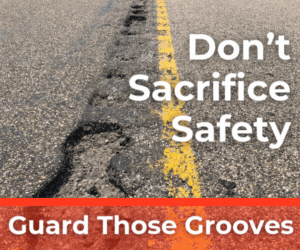The Quiet Tire/Pavement Noise Symposium held recently in Indiana made some significant sounds about the importance of reducing noise on U.S. streets and highways.
The Symposium was sponsored by the Asphalt Pavement Alliance, the Institute for Safe, Quiet and Durable Highways, the North Central Superpave Center and Purdue University.
Pavement engineers, noise engineers, DOT personnel, contractors, FHWA officials, tire manufacturers and environmental scientists from across the United States and around the world attended the conference.
DOT people came to learn more about the sources of road noise and the role that hot mix asphalt (HMA) can play in reducing that noise. Mix design and pavement design engineers came to learn what types of HMA are most effective in minimizing road noise. They came to learn how to choose materials and design mixes that would mitigate road noise. Environmental engineers came to learn about the technology of quiet HMA surfaces and their benefits.
Measuring Tire Noise
According to Judith Rochat of the U.S. DOT/Volpe Center Acoustic Facility, it is necessary to measure the differences in noise for various pavements:
- To determine future noise impacts
- To determine the performance of various pavements
- To choose particular pavements for state applications
- To ensure conformity and consistency in construction
- To check maintenance and condition of the road.
There are three basic ways to determine tire/pavement noise levels—at the source, by how well the noise is absorbed by the environment, and by wayside measurement (or the effect of pavement noise on communities).
Noise impacts are determined through noise predictions, which require substantial data collection. Quiet pavements lessen noise impacts and can be used in conjunction with other mitigation tools, such as sound barriers. Where sound barriers can not be used—for example, at intersections or where scenic views prevail—quiet pavements provide a means of reducing noise levels.
Because there is no guarantee that the public will accept quiet pavement as a substitute for other mitigation tools, measurements and documentation of noise at the source and near highways are necessary. If quieter pavements are accepted by the public for noise mitigation, their noise effects need to be implemented in the FHWA Traffic Noise Model (TNM). However, the use of quiet pavements as a viable option for noise mitigation will require an FHWA policy change.
FHWA Noise Policy
Currently, FHWA noise policy is concerned with noise levels in a resident’s back yard. Their regulation says that abatement will usually be necessary only where frequent human use occurs and a lowered noise level would be beneficial. The agency’s current noise abatement measures include traffic management measures, alteration of horizontal and vertical alignments, acquisition of property rights, and construction of noise barriers.
FHWA policy currently prohibits making adjustments for specific pavement types in management of noise levels. Only “average pavement types” are allowed in TNM pavement decisions. Current policy specifically prohibits using pavement types or surface textures as a noise abatement measure.
Policy Changes
To change current policy, Mark Ferroni, leader of FHWA’s Traffic Noise Team, says “Noise data must be gathered to document the noise levels in residents’ backyards, and to document the changes in pavement noise mitigation properties over time.” In other words, does a quiet pavement allow less and less noise abatement over time?
In the short term, Ferroni says that any policy change will apply only to a particular state for a specified pavement type and/or texture. But changes in national policy may be considered in the future.
Do Sound Barriers Work?
Low frequency sound bends around obstacles and through openings. Each meter of height on a sound barrier will reduce noise by one decibel. But sound barriers are expensive, costing between $1 million and $1.5 million per mile.
“Single barriers reflect sound and can make a noise problem worse in front of a barrier,” says Luc Mongeau, Professor of Mechanical Engineering at Purdue University. “But absorptive barriers, used on both sides of the road, will substantially reduce sound.
“It is preferable to treat the source of the noise (tire noise) rather than to treat the path of the noise,” says Mongeau, who specializes in acoustics and noise control.
Quiet Pavement Design
Single-layer porous asphalt has been implemented in the Netherlands, France and Germany. The single-layer porous asphalt consists of a 30 to 40 mm thick gap-graded mix with 20 to 30 percent air voids. It provides a 3 to 5 dBA noise reduction. This type mix costs about 10 to 25 percent more than conventional dense-graded asphalt and typically lasts 8 to 10 years.
Two-layer porous asphalt has been implemented in Denmark, France and Italy and is in the developmental stage in the Netherlands. Two-layer porous asphalt in Denmark is designed to use about an inch of 1/8- or ¼-inch top size aggregate mix as a filter layer and about 1.75 inches of ½-inch top size aggregate in the lower layer for drainage.
Noise reduction with two-layer porous asphalt is 8 or 9 dBA quieter than conventional asphalt mixes and 4 dBA quieter than single-layer porous asphalt. The mix for a two-layer porous asphalt system usually contains an average of 20 percent voids. The typical binder contents are 5.7 to 6.0 percent based on aggregate weight.
Construction costs of a two-layer porous asphalt system are typically 25 to 35 percent higher than conventional costs. The second layer of the two-layer system should be placed while the first course is still warm. Tack coats are essential. Pavement life is 8 to 10 years. Even with the additional cost of the two-layer system, costs are about 50 percent less than that of sound barriers.
Pavement Type
In general, the smaller the nominal maximum size of the aggregate in the mix, the quieter the pavement. Dense-graded HMA and stone matrix asphalt (SMA) have comparable noise levels, about 97 dBA. Fine, open-graded friction courses (OGFCs) average 92 dBA while coarse-graded friction courses average 95 dBA. Rubber-modified mixes, such as those used in Arizona, average 92 dBA.
Generally, increasing air voids within an asphalt pavement reduces the noise level. Hence, OGFCs absorb more noise than dense-graded pavements. OGFCs reduce noise levels by absorbing part of the sound energy. But the noise level on a roadway is highly variable. The noise level of a pavement will generally increase with time—how much is not known. The older and more worn the pavement becomes, the more the noise increases.
Superpave Mixes
Although not as quiet as porous mixes, fine-graded Superpave mixes are not subject to the pores clogging. While they do not reduce vehicle splash and spray, they use more local aggregates and may be more economical than porous pavements.
Fine-graded Superpave mixes can perform well in terms of rutting resistance. They are durable and they may offer improved noise benefits compared to conventional coarse-graded mixes.
Asphalt Rubber Friction Courses
The advantages of asphalt rubber friction courses, says Anne Stonex, Senior Pavements Engineer at MACTEC Engineering, are increased skid resistance, reduced vehicle spray on wet surfaces, improved drainage characteristics, increased durability, enhanced resistance to cracking, improved smoothness and noise reduction.
Tire/pavement noise intensity on asphalt rubber friction courses have been found to be about 13 dBA less than concrete pavement on some highways in California and Arizona.
Arizona Experience
The Arizona DOT uses asphalt rubber friction courses (ARFC) as a noise mitigation strategy. ARFC’s pavement life is typically 8 to 12 years compared to 6 to 9 years for their traditional asphalt. Raveling is not unusual for Arizona’s traditional asphalt friction course but is unusual for an ARFC pavement. Bleeding is rare on an ARFC pavement and snowplow damage occurs much less frequently with these pavements. Decibel reduction is typically 4 dBA lower than the best Portland cement concrete or traditional asphalt concrete pavement.
Arizona will ultimately spend over $70 million to surface concrete pavements with ARFC in the Phoenix Metropolitan area. The ARFC contains aggregate with a 3/8-inch nominal maximum size and 9 to 9.5 percent rubberized asphalt binder. It is placed ½-inch thick on asphalt pavement and one-inch thick on concrete.
Sample Designs
Doug Hanson, Senior Materials Consultant for AMEC, described three HMA options for achieving low noise. “I would use an open-graded mix with more than 15 percent air voids and with 90 percent passing the 3/8-inch sieve. I would use polymer-modified asphalt with fibers to allow 8 to 9 percent binder in the mix.
“Or I would use a fine-graded SMA mix—as fine a gradation as I can get. Or I would think about using a two-layer concept with a ¾-inch fine-graded OGFC and a 1.5-inch coarse-graded OGFC.” Hansen says that even with an optimum design, there are issues to be resolved.
As these issues are resolved, quiet asphalt pavements may become the choice for highway noise reduction.
|
Related Information
|
| Tire-Pavement Noise 101 A new FHWA workshop is sending state highway agencies back to the classroom to learn more about tire-pavement noise and noise abatement strategies. The workshop, Tire-Pavement Noise 101 , is designed to help pavement engineers and noise practitioners improve their understanding of how pavement noise is created and to learn about ways to reduce it. “The workshop is intended to bring noise practitioners and pavement engineers together and fill in the knowledge gaps between the two parties,” says FHWA’s Mark Swanlund. The one-day workshop is divided between instruction and discussion time. Topics include acoustic fundamentals, pavement noise measurement techniques, and best practices for designing and constructing quieter pavements. The workshop can be tailored to each state’s particular needs and is provided at no cost. “States must simply provide a facility and invite participants,” says Robert Rasmussen of the Transtec Group. A pilot workshop was held in June 2005 in Baltimore , Maryland . Since then, 13 states have requested the workshop. For more information on the workshop, contact Mark Swanlund at FHWA, (202) 366-1323 or mark.swanlund@fhwa.dot.gov or Robert Rasmussen at the Transtec Group, (512) 451-6233 or robotto@thetranstecgroup.com |














